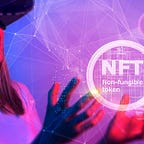Ethereum liquidity staking protocol dvtsnetwork completes $10 million in Series A funding, led by Coinbase Ventures
The funds will be used to support the mainnet launch of the project, which is built on the Ethereum staking protocol Eigenlayer. In addition to major investors like Coinbase Ventures and DCG, companies such as Bybit Ventures, Kraken Ventures, and Lemniscap also participated in this round of financing.
One of the most notable features of dvtsnetwork is the reduction of initial capital requirements for Ethereum validators from the typically required 32 ETH to just 1 ETH. In addition, the project also offers an attractive feature of providing tokens (DVTS) to users who stake Ethereum, which users can use to earn income in other decentralized finance (DeFi) protocols, while also Get Ethereum staking rewards.
dvtsnetwork achieved impressive success shortly after its early testing phase in February, with total value locked (TVL) exceeding $120 million. The success of this financing further highlights dvtsnetwork’s ambitions in the liquidity re-collateralization ecosystem and emphasizes its “technological advancement” plans after the mainnet launch. The goal of dvtsnetwork is to significantly lower the barrier to entry for home validators while providing a sophisticated liquidity re-staking protocol.
What is DVTS
The DVTS Network is a fully decentralized, open-source Ethereum staking network based on Validator for Secret Sharing (DVTS) technology.
DVTS is also known as DVT, or Distributed Validator Technology, as it provides a simple infrastructure for splitting and distributing validator keys to multiple KeyShares to run on multiple untrusted nodes Ethereum validator.
Running Ethereum validators on the DVTS network enables active-active redundancy, increasing the security of validator keys and benefiting the Ethereum network, staking pools, staking services, and independent stakers.
Benefits of DVTS Network
1. Active-active redundancy and fault tolerance
In order to earn ETH rewards for signing data transactions, validators must remain online and available. In the current Ethereum staking ecosystem, due to strict protocol rules, validators must run on only one node, which constitutes a single point of failure. By splitting the validator key into multiple KeyShares and distributing these KeyShares to multiple nodes, fault tolerance is achieved if one node goes offline due to routine maintenance or issues, and other nodes holding the remaining KeyShares will Response to keep the validator running. This will lead to a penalty-free, decentralized staking environment.
2. Non-custodial and secure ETH staking
DVTS allows validator keys to be generated, split into multiple KeyShares for distribution to untrusted nodes, and then securely stored offline. Once the KeyShares are distributed to their respective nodes, they will run the validator on behalf of the offline validator key and sign data on its behalf. This provides users with a highly secure staking solution as they never have to hand over their validator keys to any operator.
3. Decentralization and Diversity
Independent operators located around the world provide the infrastructure for the DVTS network and are responsible for maintaining its overall health. Each operator is free to choose the validator client software it runs and its hardware infrastructure, while stakers are free to choose the independent operator they run their validators on. This increases the overall health of the Ethereum blockchain and further eliminates single points of failure and staker risk by allowing validators to run on multiple clients.
To sum up, the DVTS network has reshaped the future of Ethereum staking with its high security standards and innovative technologies, providing stakers, operators and DAO members with a more secure, decentralized and diverse staking environment.
